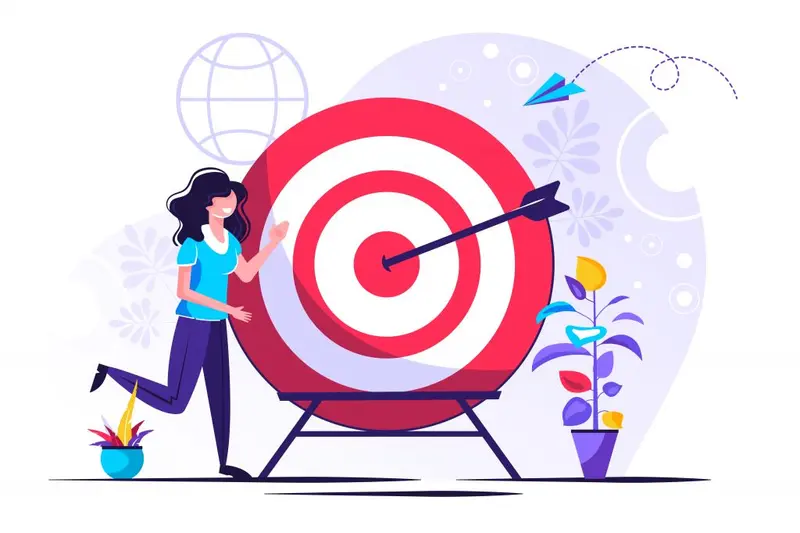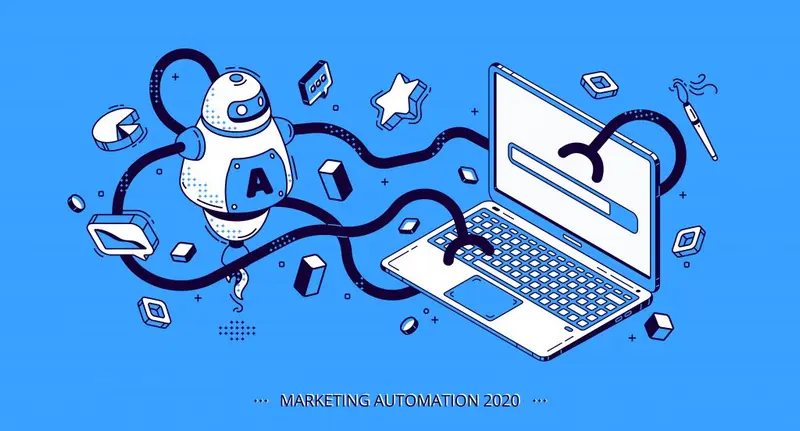So, you think it's a great idea to set up a new eCommerce business. Or perhaps you have already set one up and wonder what to do now to make it a success. Whatever your situation, there is a range of things you can do to ensure that your eCommerce store doesn't languish in a sea of websites and vanish without anybody noticing it.
It can be challenging to start a business, whether it is a traditional one or an online eCommerce business. According to data from the Bureau of Labor Statistics, about 20% of small businesses fail in their first year, and about 50% fail by their fifth year. While these aren't specific to eCommerce businesses, they indicate that you can't just set up an online store and hope that customers will come clicking (or tapping) to your site. You need to be proactive in finding potential customers and work with them to ensure that they buy items from your store, returning for repeat visits.
We have looked at eight actions you can take to grow your eCommerce business, particularly in its early days. Many of these will remain relevant throughout your site's life, however, and even large sites like Amazon engage in them regularly.
How to Grow your eCommerce Business:
- How to Grow your eCommerce Business:
- 1. Identify Your Target Audience
- 2. Encourage Repeat Business
- 3. Offer Upsells and Cross-Sells
- 4. Provide Excellent Customer Service
- 5. Market to All Stages of the Buying Process
- 6. Remember That Most eCommerce Businesses Can Operate Globally
- 7. Use Marketing Automation to Offer Special Discounts
- 8. Consider Content and/or Influencer Marketing
- Frequently Asked Questions
1. Identify Your Target Audience

Source: freepik.com
One mistake that many beginners make online is trying to be suitable for everybody. That may be okay for gigantic entities, such as Amazon, but it is not how most successful businesses operate. And even Amazon didn't start like that. They initially only sold books and expanded their product range once they had already tasted success.
You need to identify a target audience for your product. Specifically, you need to identify the types of people most likely to be interested in buying your products. Once you know this, think as they do. What products would they most love that you believe you could easily source? Once you have established a supply (or production line) for these ideal products for your target audience, you can focus on marketing them.
Too often, people set up businesses from a product point of view. They have a product that they want to sell. Ideally, however, you should create your business from a marketing perspective, i.e., discover what you could sell that would captivate and interest your preferred target audience.
2. Encourage Repeat Business
It is much easier to sell to someone who is already a happy customer than to a stranger. Don't ignore those people who have already decided they like your products. If you reward them with superb customer service, high-quality products, and competitive pricing, then they will keep on coming back. And if you're lucky, they will tell their friends too.
Too many businesses pitch most of their marketing at enticing new people to their site. They forget that they already have a support base of satisfied customers, happy to return as soon as they need a replacement or related new product.
Some firms give their best discounts to new customers, which can have the effect of making existing customers feeling unwanted, unappreciated, and taken for granted. This can be particularly evident when you follow the subscription model and can result in frequent churn, as customers change suppliers so that they can have another "welcoming" discount.
Depending on your mark-up, you might consider using specials like "buy one, get one free," to your existing customers on specific product lines. Another common practice is to issue loyalty cards to your customers, giving them a particular reward after a set level of use. Antavo has written a comprehensive guide to eCommerce loyalty programs that go into this in more detail.
3. Offer Upsells and Cross-Sells

Source: freepik.com
Both upsells and cross-sells aim to give extra value from a sale. They have the added effect of building your relationship with a customer, and in time encouraging repeat business.
Upselling involves encouraging customers to purchase a comparable higher-end product than the one they were initially considering. Cross-selling occurs when you encourage your customers to buy related or complementary products.
For example, you may have created an eBook you sell via your eCommerce store. When a customer purchases that eBook, you might automate a pop-up suggesting they buy a more expensive "elite" version of that eBook, with additional sections. This is an example of an upsell – you are selling them an upgraded and more profitable item instead of the more basic version they were going to purchase.
You often upsell by showing product feature charts, demonstrating just how much more value the more expensive item gives than the cheaper version the customer was originally going to purchase. The customer will usually walk away happier, due to this extra perceived value, despite having had to pay more.
Cross-selling identifies complementary products that give satisfaction unfulfilled by the original item. Often these are products that the customer may have purchased anyway at some future point. Online retailers often include cross-sells on their checkout pages. For example, Amazon does this regularly when they suggest other items that would interest you.
Both these practices can generate repeat purchases, and they also highlight the depth of your product catalog.
4. Provide Excellent Customer Service
Another way you can encourage repeat business is to ensure that you give the best customer service possible. Remember that the sales process continues past the point of making a sale. As customers usually can't touch or experience your product before buying, unlike a physical store, you need to reduce their worries by making the purchasing experience as trouble-free as possible for them. You also need to ensure that they have the confidence to purchase from you, knowing that you will help them should something go wrong with their purchase.
Another important feature of eCommerce is that people rely on reviews of products when they make purchasing decisions. According to Oberlo, nearly nine out of ten consumers read reviews before making a purchase, and 56 percent of consumers read at least four reviews before buying a product. Also, almost half of all internet users say they post online reviews at least once a month. Therefore, you must give good customer service if you want glowing reviews from your customers.
Poor customer reviews will not only reduce the chances of somebody returning as a happy repeat customer. They also discourage other potential buyers from giving your products a try. Instead, they will go elsewhere to a site with better reviews giving them the confidence to spend their money there.
5. Market to All Stages of the Buying Process

Source: freepik.com
A common mistake by eCommerce beginners is to think that they can simply advertise, and people will flock to buy their products. In reality, customers go through different stages in the buying process, and you need to target your marketing to each stage. They go through a purchase funnel before they commit to spending their hard-earned money. Although there are many variations on the purchase funnel, a typical one (from top to bottom) is:
-
- Need recognition –a potential customer realizes that he/she has a need
- Information search – he/she begins to look for information to help solve the problem
- Option evaluation – the potential customers reflect on what he/she has discovered
- Purchase decision – the customer is ready to make a purchasing decision
- Post-purchase evaluation – once the customer has made a purchase, he/she evaluates whether it was the right decision
There is a temptation for eCommerce businesses to go straight to Step 4 with their marketing. However, if you do that, you are likely to miss all those at the earlier stages of the process, i.e., people who are not yet ready to buy. And when they are prepared to purchase, they will bypass you in favor of a firm they have included in their shortlisting.
Also, the process isn't linear. Customers go through the process at their own rate, often out of sequence. You ideally should have marketing that encompasses all five stages.
6. Remember That Most eCommerce Businesses Can Operate Globally
If you are a traditional store, you are really limited to having a client base in the area surrounding your shop. The only way you can expand your customer base (short of setting up some form of eCommerce extension) is to open additional branches at great expense. However, most eCommerce businesses operate to a global audience.
If your product is in any way relevant to a global audience, you should consider adding international shipping details to your site. Of course, if your product is digital, it is no more expensive to deliver your product to the other side of the world than it is to your neighborhood.
7. Use Marketing Automation to Offer Special Discounts

Source: freepik.com
This is a variation of using upsells and cross-sells. You can set up a series of post-purchase emails (even SMS with the right software). You can set up sequences of nurture emails (or messages) to educate your customers and provide after-sales service. These emails can also include offers of special discounts on products that will be relevant to that customer.
This is particularly useful when you sell products for some event or activity that follows an obvious sequence of events, such as selling items relating to weddings or babies. As you come closer to the wedding or go through the different milestones in a customer's baby's life, you could send out targeted messages, offering discounts on products suitable for that time.
Another use for marketing automation is to recognize customer events, such as their birthdays, anniversaries, and even seasonal events like Christmas. You can set up a sequence of personalized messages remembering the special day. These could offer a dollar-off discount for the customer's next purchase. For example, you might send each customer a $10 discount coupon code on their birthday.
8. Consider Content and/or Influencer Marketing
Two valuable forms of online marketing are content marketing and influencer marketing. Both involve making valuable content that will interest your potential customers. The main difference is that with content marketing, you tend to create and distribute the content yourself, but with influencer marketing, you pay influencers with their massive audiences to do that job for you. As we have seen, all eCommerce businesses benefit from positive reviews. When it is influencers doing those reviews, then the effect is magnified.
Frequently Asked Questions
What e-commerce business is most profitable?
These are the 5 most profitable eCommerce business ideas:
- Beauty and health products
- Smart home and electronics
- eBooks
- Content writing
- Children’s games
How can I promote my e-commerce business?
5 effective marketing ideas to promote your eCommerce business:
- Invest in SEO
- Use influencer marketing campaigns
- Sell on marketplaces
- Use PPC campaigns
- Make strategies for each social platforms
How do I increase ecommerce sales?
These are the 5 most effective ways to increase ecommerce sales:
- Use targeted pricing
- Implement scarcity
- Use paid traffic to boost sales
- Build your email list
- Create promotional campaigns for different social networks
What are the 6 success factors of e-commerce businesses?
There are 6 big success factors for e-commerce businesses and success:
- Product pricing regulation
- High quality products
- Store accessibility
- Taking advantage of m-commerce
- Make a good first impression


![Actionable eCommerce Growth Strategies for Digital Marketers [+ Examples of How To Do It]](https://s.influencermarketinghub.com/imaginary/resize?width=400&height=200&type=webp&url=https://influencermarketinghub.com/wp-content/uploads/2023/06/e-Commerce-Growth-Strategy.png)
